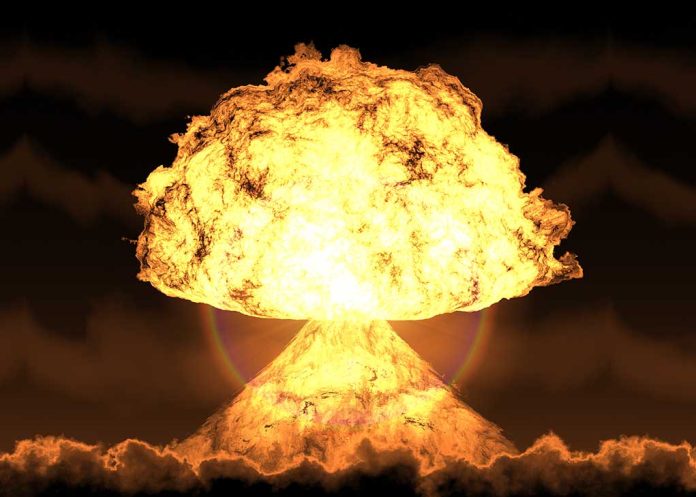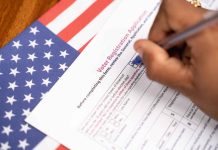
(NationRise.com) – World War II saw the rapid advancement of weaponry from all sides of the war. While Hitler had plenty of secret projects going on, the United States had something up its sleeve as well, the Manhattan Project. The creation of the atomic bomb sparked controversy, and after the US used these bombs, the nuclear arms race officially began.
Born Out of Fear
In 1939, President Franklin D. Roosevelt created the agencies that eventually became the foundation for the Manhattan Project. His reasoning was simple: US Intelligence officers provided information stating Hitler’s scientists were already working on nuclear weapons and were apparently ready to use them when the time came. In the beginning, the Advisory Committee on Uranium (ACU) was created as a team of military officials and scientists with one simple task, to learn uranium’s potential of becoming a weapon.
Enrico Fermi and Leo Szilard of Columbia University, with funding from the US government, focused on nuclear chain reactions and uranium enrichment, otherwise known as radioactive isotope separation. The ACU, in 1940, underwent a name change and became the National Defense Research Committee. This name didn’t last long as it was once again changed in 1941 to the Office of Scientific Research and Development (OSRD).
Later that same year, Japanese bombed Pearl Harbor, effectively catapulting the US into World War II on the side of Great Britain, France and Russia in the fight against Germany and the Japanese. The OSRD had the Army Corps of Engineers join in 1942 upon President Roosevelt’s approval. From here the project officially became a military concern, and scientists took a back seat and served in a supportive manner.
Beginning the Project
In 1942, US Army Colonel Leslie R. Groves was assigned to lead the Manhattan Engineer District after it was formed by the OSRD; officials based the project in the same borough of New York City, which is where the name came from. Szilard and Fermi, now at the University of Chicago, were still actively researching nuclear chain reactions, a process in which atoms split and interact. Eventually, the pair enriched uranium to create uranium-235.
At the time, scientists like Glenn Seaborg were creating microscopic samples of pure plutonium, and the Canadian government and military were conducting nuclear research at several sites in Canada. President Roosevelt, on December 28th, 1942, authorized the Manhattan Project to be officially formed. It was to bring these research areas together in an effort to weaponize nuclear energy. Several sites were created throughout Canada, Tennessee, New Mexico and Washington.
Already in the Works
In 1943, J. Robert Oppenheimer, a theoretical physicist, along with Edward Teller and others, already had a working theory of nuclear fission when he was nominated to be the director of Los Alamos Laboratory in New Mexico. The laboratory’s creation, known as Project Y, was officially established on January 1st, 1941, and is where the first Manhattan Project bombs were constructed and tested.
The Trinity Test, on July 16th, 1945, took place in a remote desert near Alamogordo, NM and was the first successful test of an atomic bomb. The Atomic Age had officially begun with a mushroom cloud more than 40,000 feet tall.
Scientists working under Oppenheimer created two separate types of bombs, one being the enriched uranium bomb known as the Little Boy and the other a plutonium-based bomb known as the Fat Man. Both of these bombs were integrated into the strategy of the US to end the second world war.
Calm Before the Storm
The Germans were taking heavy losses in Europe and nearing a surrender. However, US military leaders came to an agreement that Japan would force an invasion of its homeland before allowing the war to end. The Potsdam Conference took place on July 26th, 1945, where the United States gave Japan a choice: the country could reform its government into a peaceful democracy or suffer “prompt and utter destruction.” As the conference didn’t offer any role for Japan’s emperor, the country refused terms set forth by the US.
No Other Choice
Hiroshima was identified by US military officials as an ideal target for one of the atomic bombs created under the supervision of Oppenheimer. The area had no known American prisoners of war, and the size of the city was ideal. Officials decided that a forceful demonstration of the weapons developed in New Mexico was needed to push Japan to surrender.
On August 6th, 1945, the Little Boy, which was yet to be tested, was dropped 1,900 feet above Hiroshima. The result was devastation and loss of life that had never been seen before covering five square miles. With no surrender by Japan in place three days later, the US dropped another bomb on Nagasaki. This time, they used the Fat Man, which destroyed more than three square miles of area. In all, the two bombs killed over 100,000 people and erased two Japanese cities.
After the death of President Roosevelt, President Harry Truman received an intent to surrender from Japan on August 10th, 1945. On the 14th of August, Japan had officially surrendered.
Legends Never Die
Officials started the Manhattan Project with one intention — end the war. Of course, after the dropping of two deadly nukes on Japan, the war was basically over. The Manhattan Project didn’t just end a war, however; it opened the door to a number of applications for using nuclear energy. For example, several medical examining and imaging machines, along with cancer treatments, use radiation.
Thanks to the Manhattan Project, we now have nuclear power plants providing us with a tremendous amount of energy. The power application extends further into the military than simply leveling cities. All US Navy’s submarines are nuclear powered, and many of the ships are as well. In reality, if not for the Manhattan Project, we could all be living very different lives right now.
Copyright 2023, NationRise.com






















